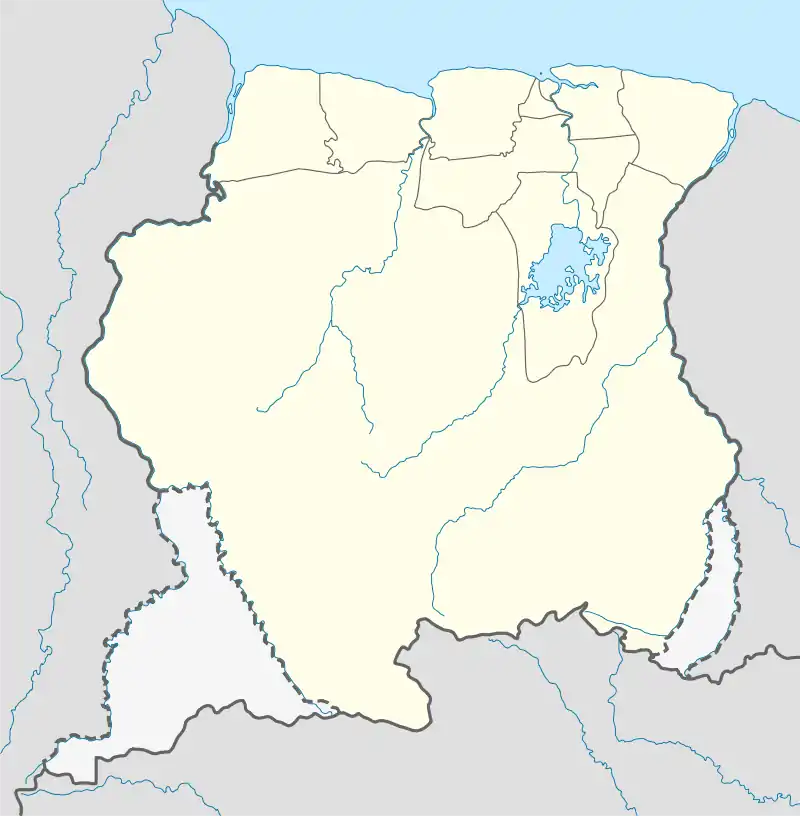Mary's Hope | |
|---|---|
Village | |
 | |
 Mary's Hope Location in Suriname | |
| Coordinates: 5°52′37″N 56°19′00″W / 5.876944°N 56.316667°W | |
| Country | |
| District | Coronie District |
| Resort | Welgelegen |
Mary's Hope is a village in the Welgelegen resort of the Coronie District of Suriname. The village can be accessed from the East-West Link.[1]
Overview
Mary's Hope started in 1817[2] as a slave plantation, producing cotton, owned by Edward Conolly[3] who was originally from Ireland. 138 people were enslaved on the plantation at the time of the emancipation of slavery in 1863.[2] Later, the plantation changed ownership several times, and was in a neglected state. In 1872, Mary's Hope was the fourth largest settlement in the district of Coronie.[2]
On 15 December 1874, land was donated to a Roman Catholic mission to build a school, a church and a rectory. In 1875, a little church was built. In 1884, Peter Donders was the parson, and Mary's Hope had developed into the most important parish in Coronie.[2] In 1892, the Church of Immaculate Conception was constructed. The church was built by Frans Harmes who also constructed the cathedral in Paramaribo.[4]
In 1922, Father J. de Kort embarked on a plan to create a rice polder. In 1935, the Sint Jozef vereniging[5] was founded, a cooperation of rice growers,[6] and Mary's Hope has developed as a rice growing community.[5]
The village is connected to the electricity grid, but has no telephone connection.[1]
References
- 1 2 Plan Bureau (2014). "Planning Office Suriname - Districts 2009-2013" (PDF). Planning Office Suriname (in Dutch). p. 82.
- 1 2 3 4 "Mary's hope". Coronie.nl (in Dutch). Retrieved 27 February 2021.
- ↑ "Plantage Mary's Hope". Suriname Plantages (in Dutch). Retrieved 27 February 2021.
- ↑ "Distrikt Coronie". Suriname.nu (in Dutch). Retrieved 27 February 2021.
- 1 2 "Coronie Nieuws". De Surinamer via Delpher.nl (in Dutch). 16 November 1946. Retrieved 27 February 2021.
- ↑ G. van Kempen (1992). "ONTSTAAN EN ONTWIKKELING VAN DE ST. JOZEF POLDER" (PDF). Coronie.eu. Kronieken 1842 R.K gemeente Coronie (in Dutch). Retrieved 27 February 2021.